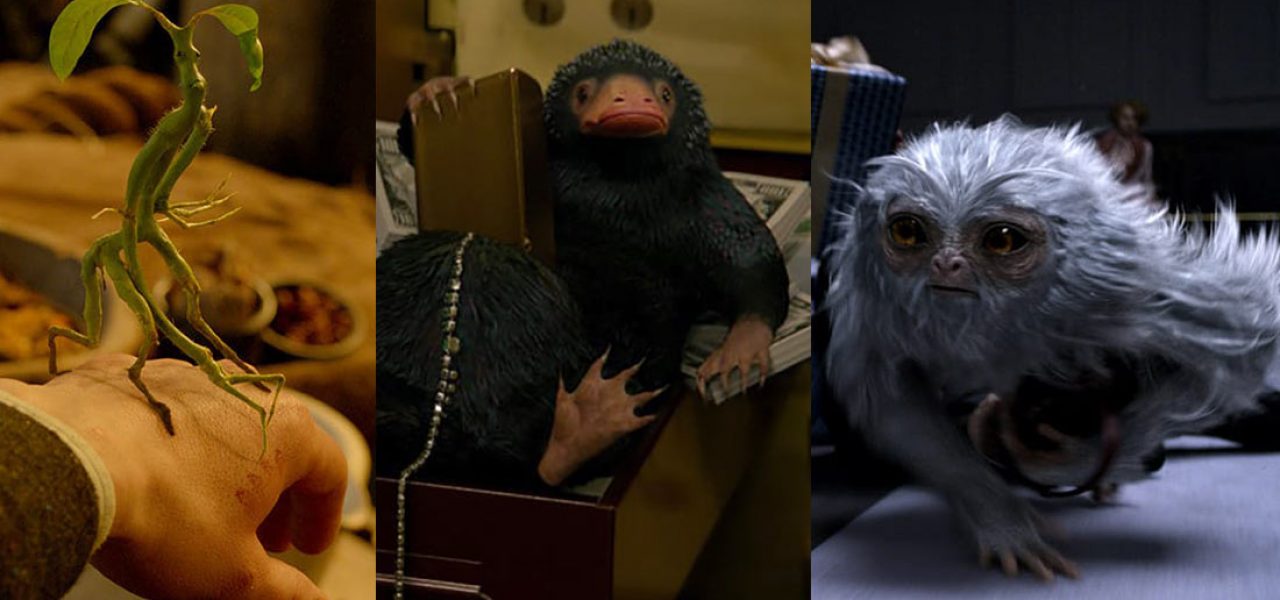
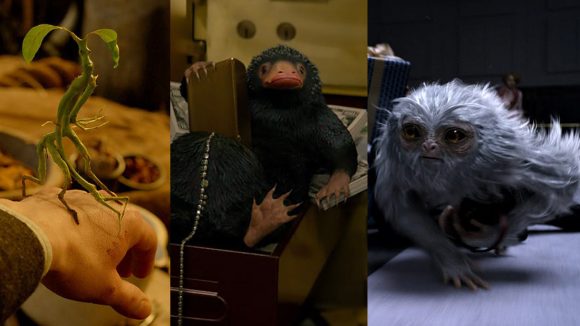
Tips & Tricks for Creating Fantastic Beasts From the Artists of ‘Fantastic Beasts and Where to Find Them’
There are just under 1,500 visual effects in director David Yates’ Fantastic Beasts and Where to Find Them, released to an enormous reception as a prequel to the Warner Bros. Harry Potter films.
So many of the beasts within this new film are complex cg characters ranging from the gold-stealing Niffler to the snake and bird-like Occamy, all of which are somehow magically stored inside the ‘Magizoologist’ Newt Scamander’s (Eddie Redmayne) suitcase – until they escape.
In this behind the scenes look at the animation challenges presented by the beasts, Cartoon Brew talks to the overall vfx supervisors Tim Burke and Christian Manz, animation supervisor Pablo Grillo, and several of the effects studios responsible for some of the film’s central creatures.
The naughty Niffler
The mischievous Niffler has quickly become the audience favorite from Fantastic Beasts. Seen regularly escaping Scamander’s suitcase to fill its seemingly endless pouches full of valuables, the Niffler was designed to be part mole, part-platypus, and part-echidna. Animation supervisor Pablo Grillo from Framestore came onto the production early to help with creature development, and the Niffler was one of his first assignments.

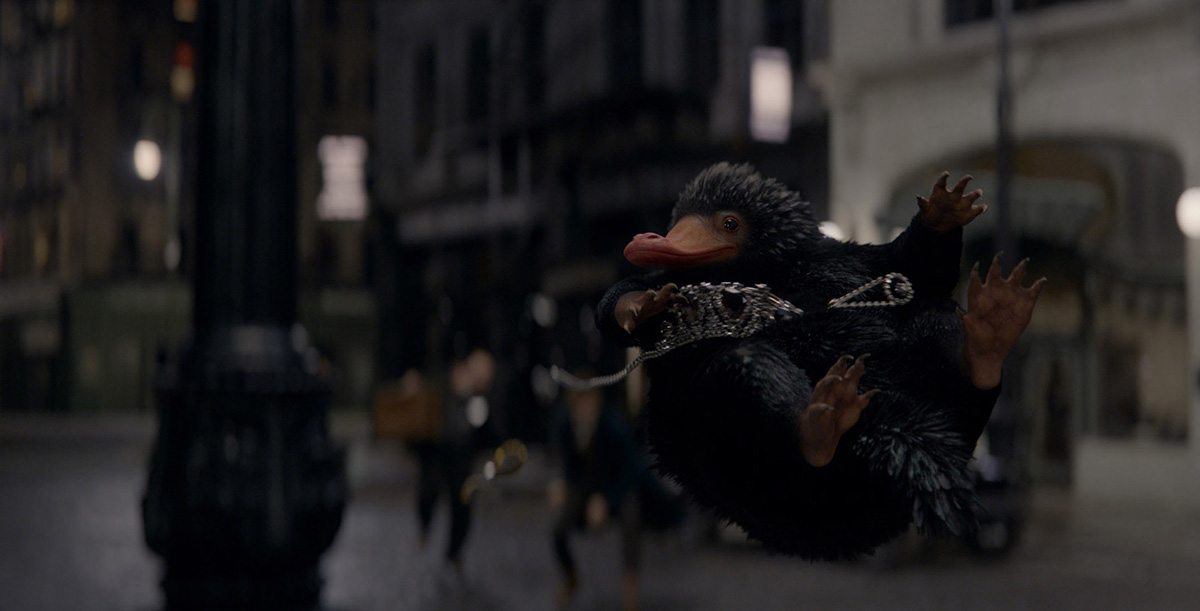
“We would have these creature development meetings with David Yates and the producer David Heyman,” said Grillo. “With the Niffler, we gathered a whole load of images of real-world animals – mole, platypus, echidna. And we gathered video resources of animals using their hands. Platypuses were very charming, constantly churning and looking through the silt and sand for food, and that felt like a good inspiration for the Niffler.”
“They had to be fantastic but not fantasy,” added Christian Manz. “We found great footage of a honey badger in South Africa ransacking somebody’s house. It was just an insatiable desire for food, going through fridges and cupboards and all that sort of thing. A lot of those real-world animalistic traits are what went into the Niffler. Which is why I think he’s so successful because he’s all of those things.”
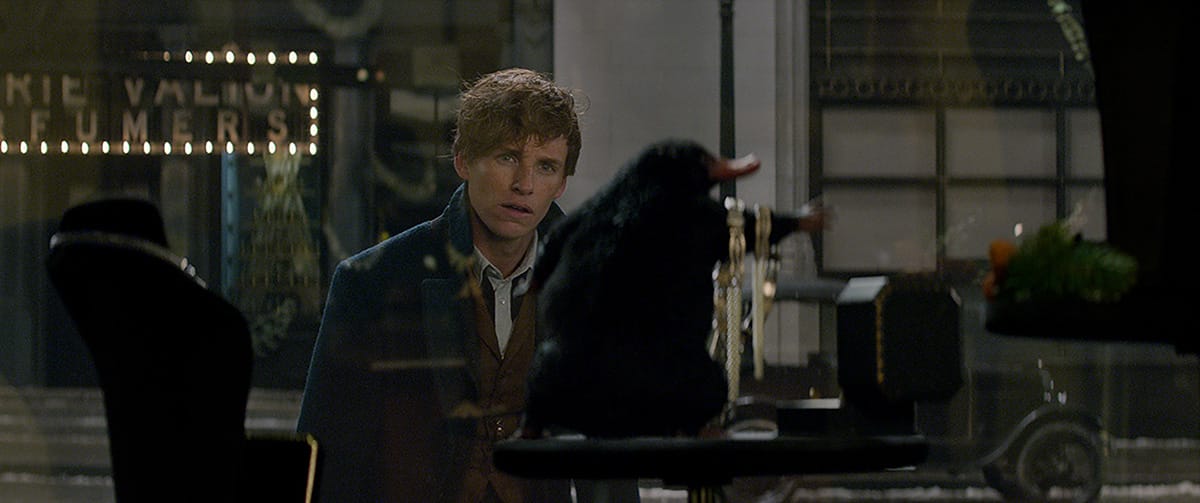
On set, simple puppets, including hand-operated glove versions, were built to stand in for the creature that Redmayne could interact with. Grillo was there, too, in order to give the actor a description of what action would be happening. Yates also wanted the audience to get a sense that the Niffler and Scamander had a history – “that the ‘little bugger,’ as Newt calls him, gets out all the time and is just trying to embarrass him because of his insatiable desire to build his gold collection,” said Manz.
The Niffler, which Framestore was responsible for, elicits the most audience laughs in a scene where he is ‘busted’ ransacking a jewelery store and pauses mid-necklace grab. Grillo had formulated key character beats for what the animal would do in that situation. “The lovely thing about animals is their naivety. They think if they stay still you can’t see them. The humor also came from Newt’s and Niffler’s past and almost the respect Newt gives him for his skill. He admires it, but it’s always getting them into problems.”
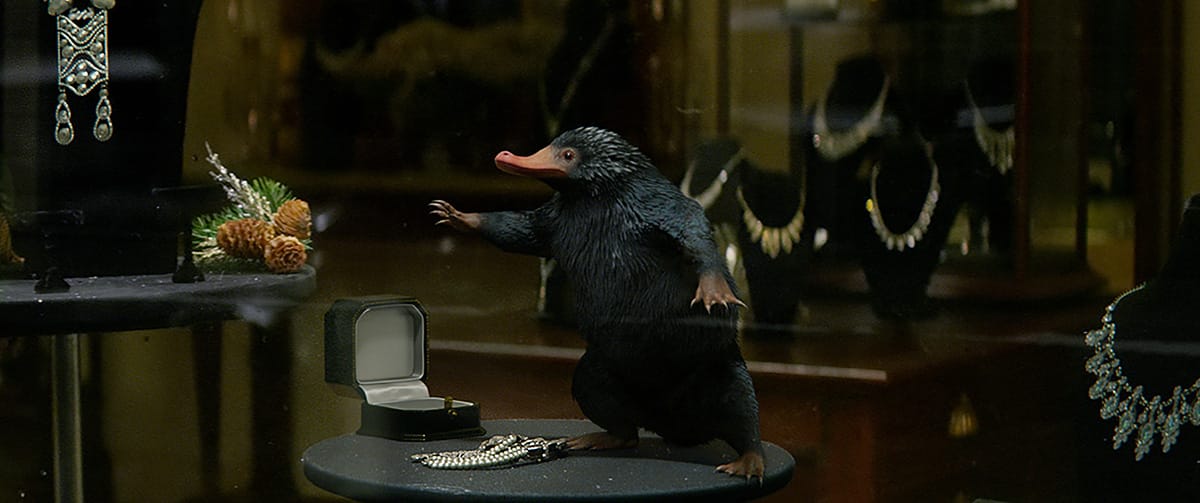
“One thing I did,” said Grillo, “was ask the animators to look at these Youtube compilations of animal fails. One, they’re very funny. But they’re also a brilliant insight into animal psychology, which is different from humans. More often than not these animals want to jump across a gap or across a space and they screw it up or miscalculate it. It’s a conflict between their desire and what their body is able to pull off in the end. I think that’s what brings the charm – the clumsiness of that physicality juxtaposed against the desire.”
Triumphant Erumpent
Partly resembling a rhinoceros, the Erumpent was another Framestore creation. After escaping from the suitcase, it is spotted by Scamander and new companion Jacob Kowalski (Dan Fogler) in the Central Park Zoo, where an attempted mating dance is used to coax it back.
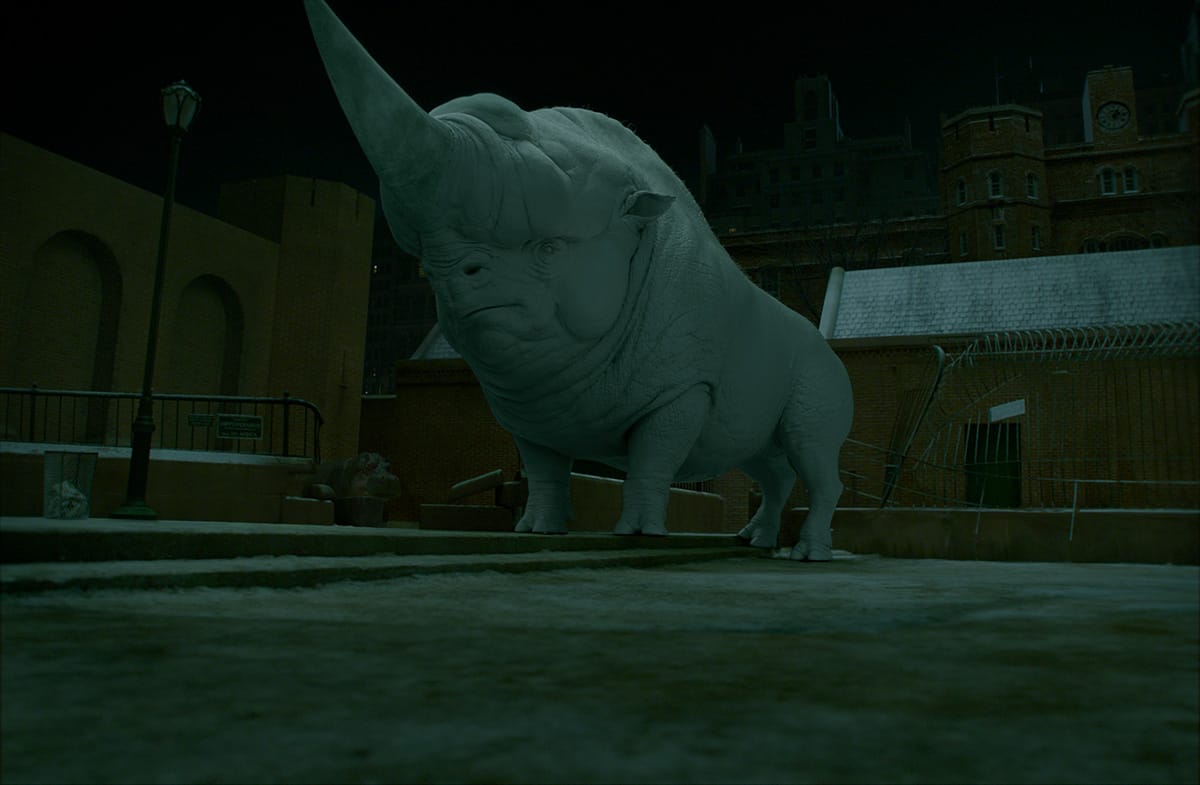

In design, the filmmakers struggled initially to make the Erumpent magical enough, and added things to heighten her in the magical realm. “But it always took away from the fundamental believability to set up the scene so we could get to something more ridiculous by the end,” noted Grillo.
Shooting scenes for the Erumpent, and the dance, involved careful choreography. The shots made use of a 17 foot tall and 20 foot long carbon fiber wireframe structure that was puppeteered by the same team behind the “War Horse” stage show. “We had four people actually operating the puppet rig on that mating scene for every shot,” said vfx supe Tim Burke. “And actually before we even shot, they rehearsed that with Eddie, so they could get a relationship down. For Eddie’s character it was all about having that relationship with the actual creatures themselves.”
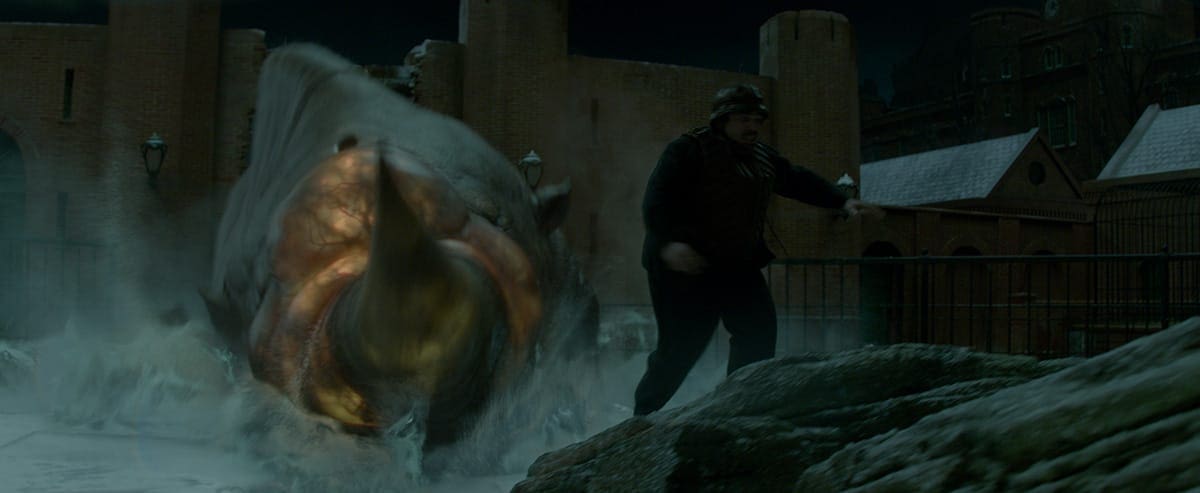
“It was a great help doing it that way,” continued Burke, “because one of the big tests with this film was whether you believe the creatures were real and were grounded in existence. And the biggest way to sell that is if you’re not taken out of the movie. You’ve got to believe that the actors believe they’re real. Having the sort of on-set reference for everyone to understand where the creatures were and what they looked like, I think was one of the key successes and started making our job easier when we put the creatures in.”
In animating the Erumpent, Framestore took on Grillo’s observations about the size of the Erumpent and the creation of some tense moments of stillness as the dance continues and before the creature ends up charging. “Her body has its own momentum that is like steering a truck,” said Grillo. “That can still be beautiful and graceful and charming and almost like a ballet. But animating that with the right weight and sense of jiggle that will sell the scale is always challenging.”
To catch a Demiguise
In Harry Potter lore, the hair of a Demiguise is used to make an invisibility cloak. For fans, seeing the actual creature behind the cloak was considered a big deal by the filmmakers and much effort was made to ‘win them over’ with a compelling creature design.
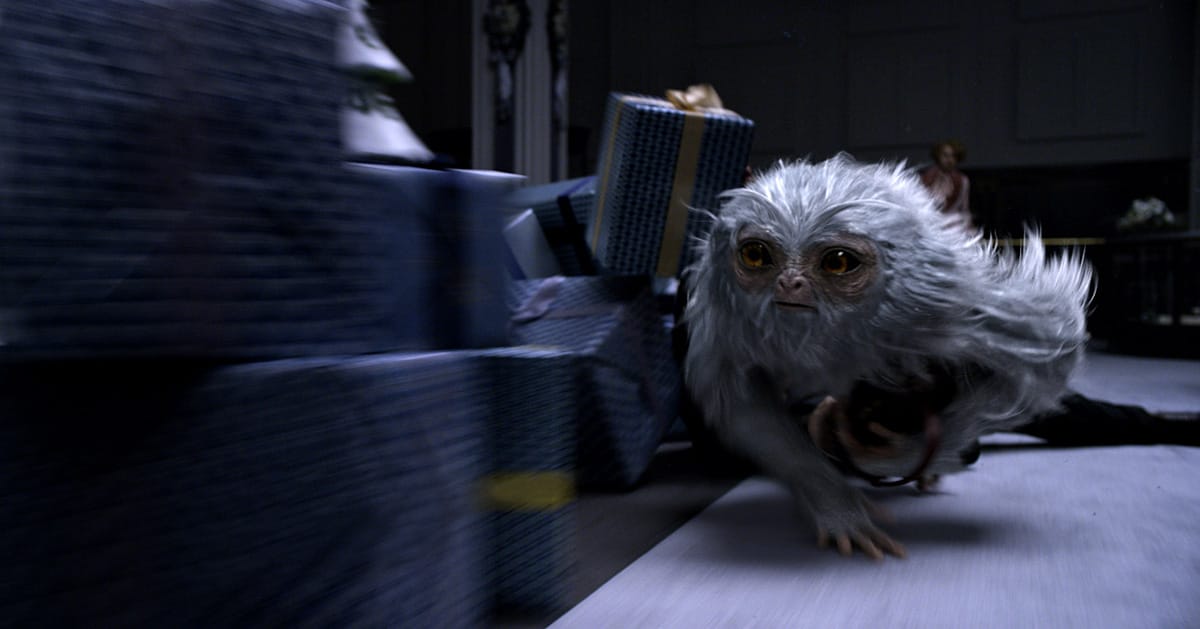
“David Yates was very keen to represent the Demiguise like a little old wise man,” said Burke. “And when we tried to get into the character of him, David suggested Jim Broadbent who’d worked on the Potter films, and we almost at one point discussed shooting some reference with him. We kind of got into the spirit of this little old man who chatted away to himself and imbued that into the Demiguise personality and character.”
MPC crafted the creature, and had two main challenges; the hair and the invisibility. “It was described as having beautifully long silver hair,” said MPC visual effects supervisor Ferran Domenech. “It was a mix of a primate and a sloth in that the hair covered the entire body. So it wasn’t going to cut it just to do fur, it needed long flowing hair. It was going to be doing both close-up acting, and running very fast and having its hair moving in the wind. In computer graphics it’s always hard to do long flowing hair.”
To realize the hair, MPC turned to its proprietary hair grooming toolset called Furtility, which it developed further to allow for scalability and texture mapping of various textures on the fur (the tool was also used for the feathers of the Occamy).
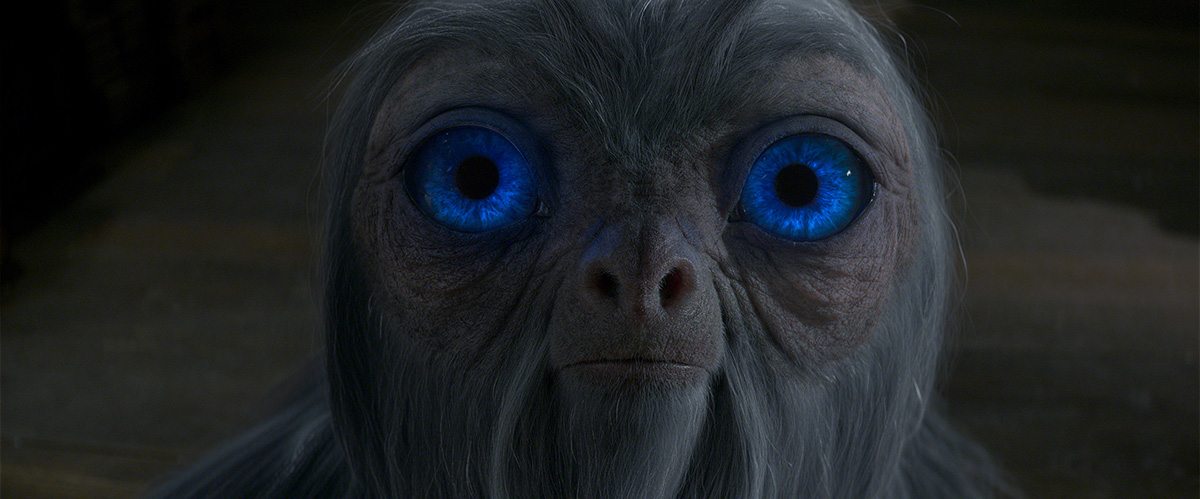
In coming up with the invisibility look for the Demiguise, artists referenced the works of photographer Liu Bolin, who makes pieces where the subject is painted to ‘disappear’ into scenes they are photographed in. “The lovely thing about that,” said Burke, “is that as you move around them with a slight perspective change you will see a difference of relief to it. All the sudden you realize through perspective that there’s something there. And we developed that idea for creating the Demiguise’s invisibility where he takes up part of the background and it’s only when the camera moves that you see the shift in perspective.”
During a chase scene in a department store with the Demiguise, Jacob carries the creature on his back. For that, actor Dan Fogler worked with a simple backpack to suggest the weight, which was then painted out and replaced with MPC’s digital Demiguise.
Rise and fall of the Occamy
One of the more unusual fantastic beasts was the Occamy, a creature with the body of a snake, the head of a bird, and with feathers and legs. It also had the ability to grow and shrink to fit its available space. This all presented considerable challenges to MPC’s vfx team, which was behind the Occamy.
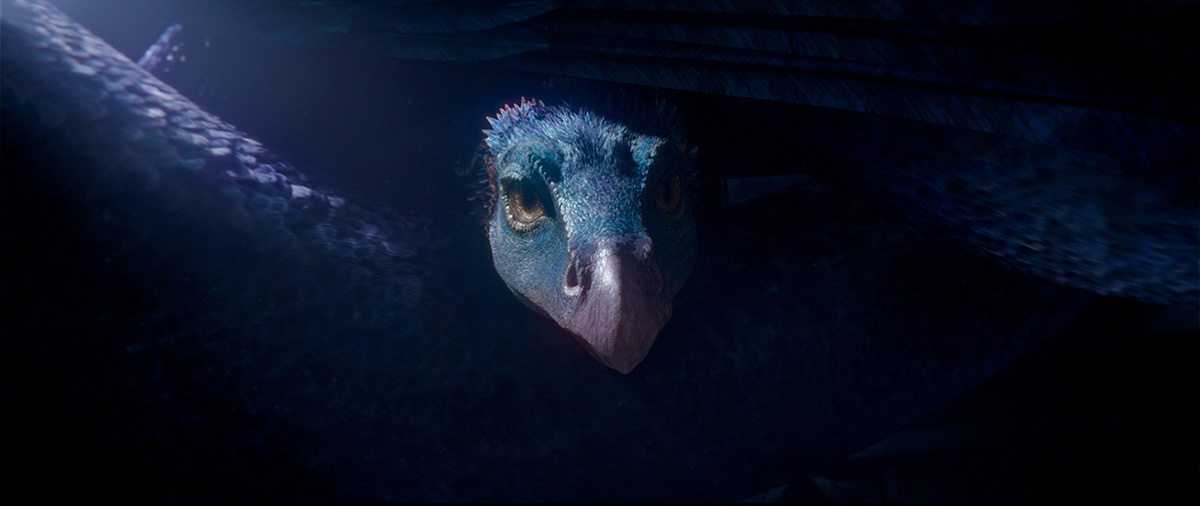
“The large and small versions of the Occamy were actually all the same rig,” said Domenech. “We prepared for the fact that it had to shrink, so we made the rig scalable. The groom was scalable too. We also had alternate rigs to fill in the space when it’s in oversized mode and is hanging in the rafters on the ceiling. To be able to fill the space with one continuous creature would really be impossible because you would have to make an extremely long snake for every single shot in the movie. So we had just the tail, or just the head and the neck, or the body with the wings, or just a long tube of the snake.”
Another challenge lay in combining the snake and bird-like personalities, both in terms of animation and realizing its scaly feathers. Here, MPC looked at close-up views of hummingbirds. “They have beautiful plumage on their necks that are quite round and overlap almost like fish scales, which fit the Occamy well,” said Domenech.
Flight of the Billywig
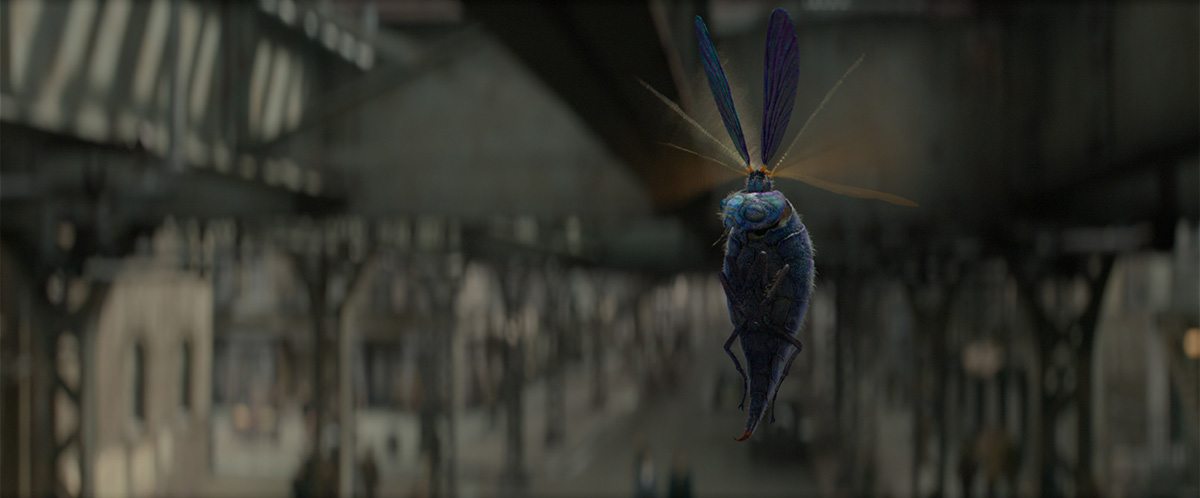
Another of MPC’s creatures was the Billywig, a small flying insect that actually had two flight modes. The first was like a dragonfly and the other was via a transformation of the wings into a single propeller that made it hover like a helicopter. “We looked at dragonfly and hummingbird as reference for the first mode, and then for the other mode we looked more at birds,” explained Domenech. “We also looked at flies which clean their own legs, so we had the Billywig grooming himself as he hovers.”
Thunderbird is go
In formulating the beasts of the film, ‘Frank’ the Thunderbird was a relatively late inclusion. The filmmakers had considered a bird with a multi-wing motion that originally was going to be shown as the Occamy, but the design instead moved on to a whole new creature – the Thunderbird – when the Occamy was able to stand alone in its own chaotic scene.
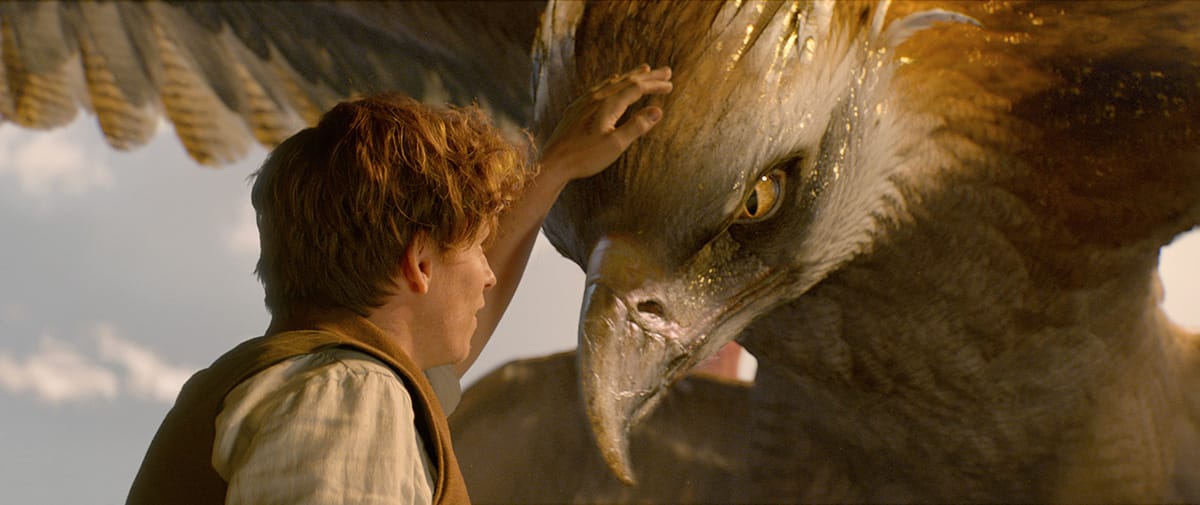
That provided a chance to make the Occamy more serpent-like and the Thunderbird, which Double Negative produced, a more noble beast. “It was our all-American creature,” said Grillo. “There’s elements of the bald eagle, and the multi-wings had a totem pole effect, with an ethnicity that you could allude to with this creature. It was also a lovely creature to bookend the film with, since Newt’s visit to the States is to release it back into the wild, so being able to introduce a nobility and poise was great. It was an incredible thing to show this creature being released.”
Meet the Graphorns
Inside the suitcase Scamander has secured the last pair of breeding Graphorns, along with an offspring. These horned, hump-backed beasts with distinctive face tentacles were realized by Image Engine. The studio considered many influences including rhinos, elephants, ostriches, and caterpillars. “Caterpillars may sound funny,” said Image Engine visual effects supervisor Martyn Culpitt, “but there is this horned caterpillar which we actually took the shape of the horn from to use all the spikes.”
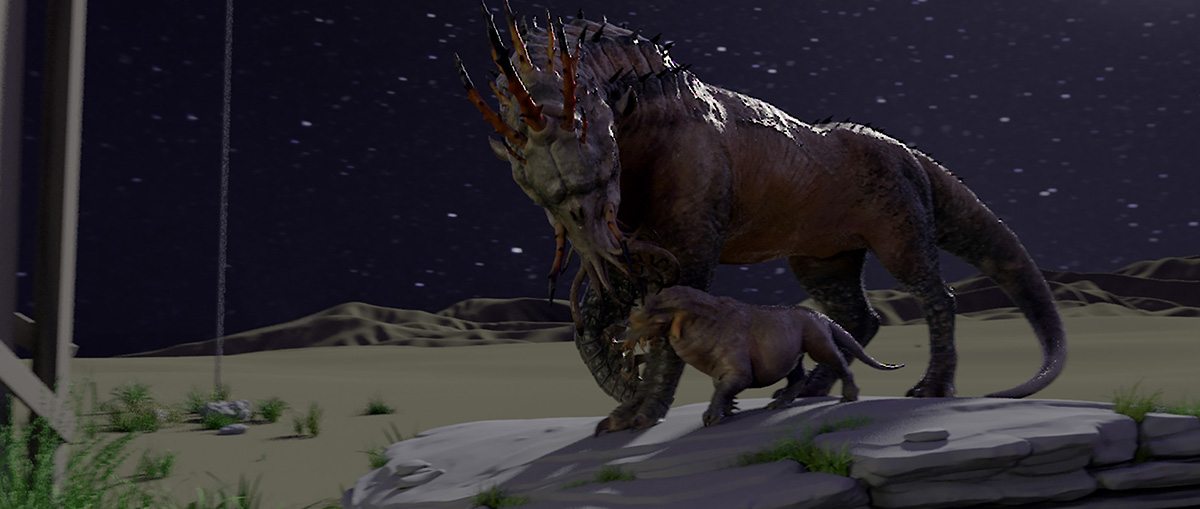
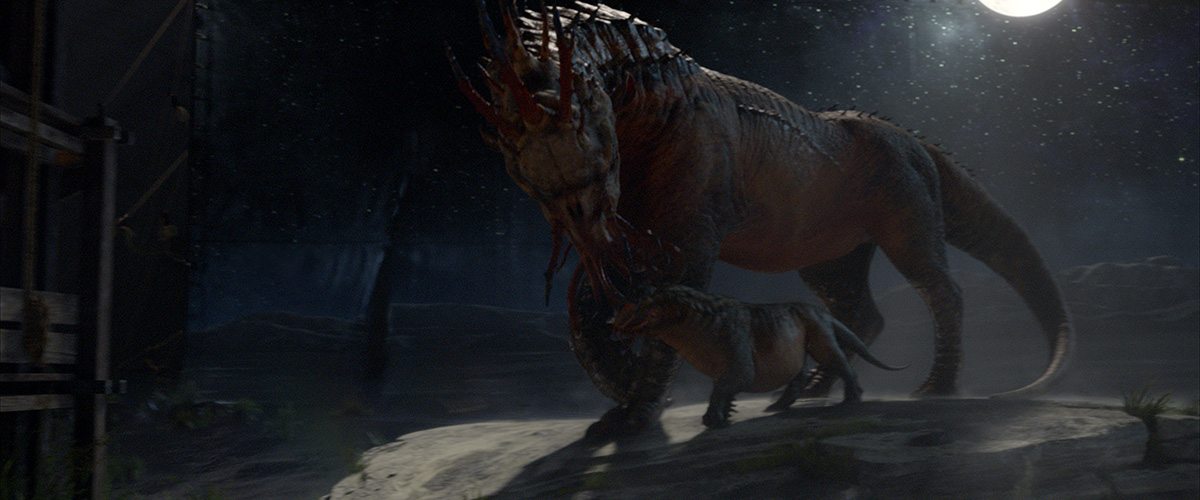
On recent films, Image Engine has been ramping up its creature department, and the Graphorns certainly required a wide suite of tools to accomplish, from sculpting in ZBrush, additional modeling in Maya, some hair with Yeti, rendering in 3Delight, and a new muscle system simulation with Ziva. “We actually built the creature to a really high level where you could actually go right up to its eye,” said Image Engine asset supervisor Barry Poon. “There’s that much detail in it.”
Beware the Swooping Evil
The green and blue bat-like Swooping Evil comes in handy several times in Fantastic Beasts, flying in to save the day, except perhaps when it wants to feed on people’s brains. It was another Image Engine beast. Here, in addition to bats, the studio also considered manta rays as reference. “We were going for the ripple in the wings and a strong force being driven by it,” said Culpitt.
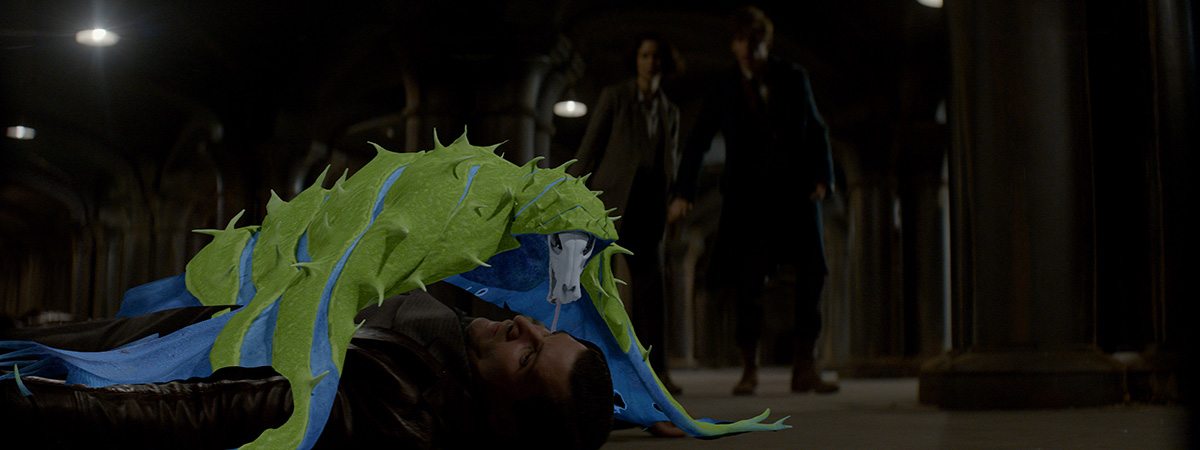
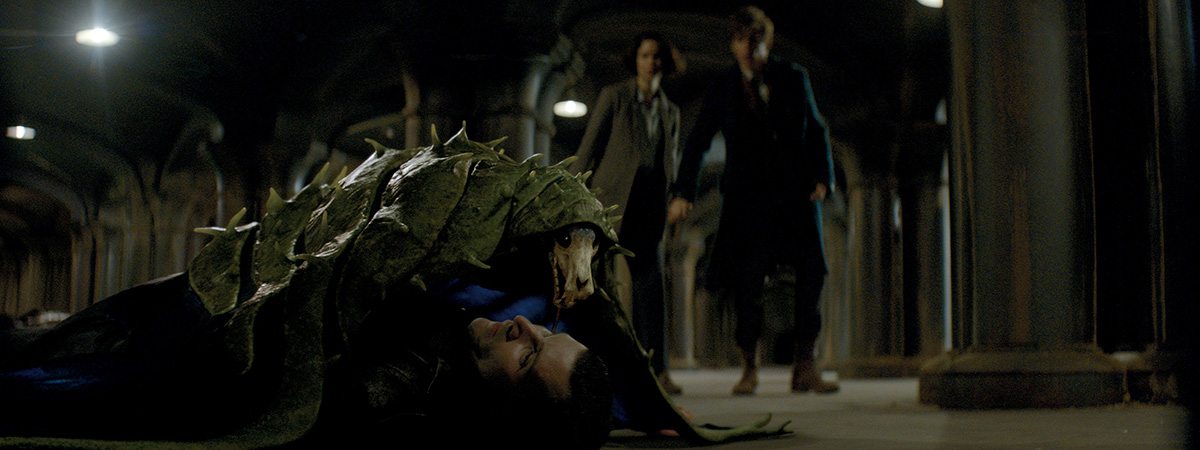
“This thing also needed to pull up into a cocoon shape,” added Poon, “so we had to make sure when it unraveled to become the Swooping Evil that it had the characteristics of a bat and manta ray. We did a few tests to see how fast it would move but also how fast it would turn and change direction, like a swallow might.”
Pickett the Bowtruckle
One of Scamander’s closest beasts is Pickett the Bowtruckle, a stick-insect-like creature who often travels in the pocket of his protector. “The design had to communicate the fragility of the animal,” said Grillo. “It had to echo Newt’s fragility, in a way, without being weak. He’s a courageous creature, there’s a heart and a valor to this creature. Pickett is a bit of a social outcast like Newt, too.”
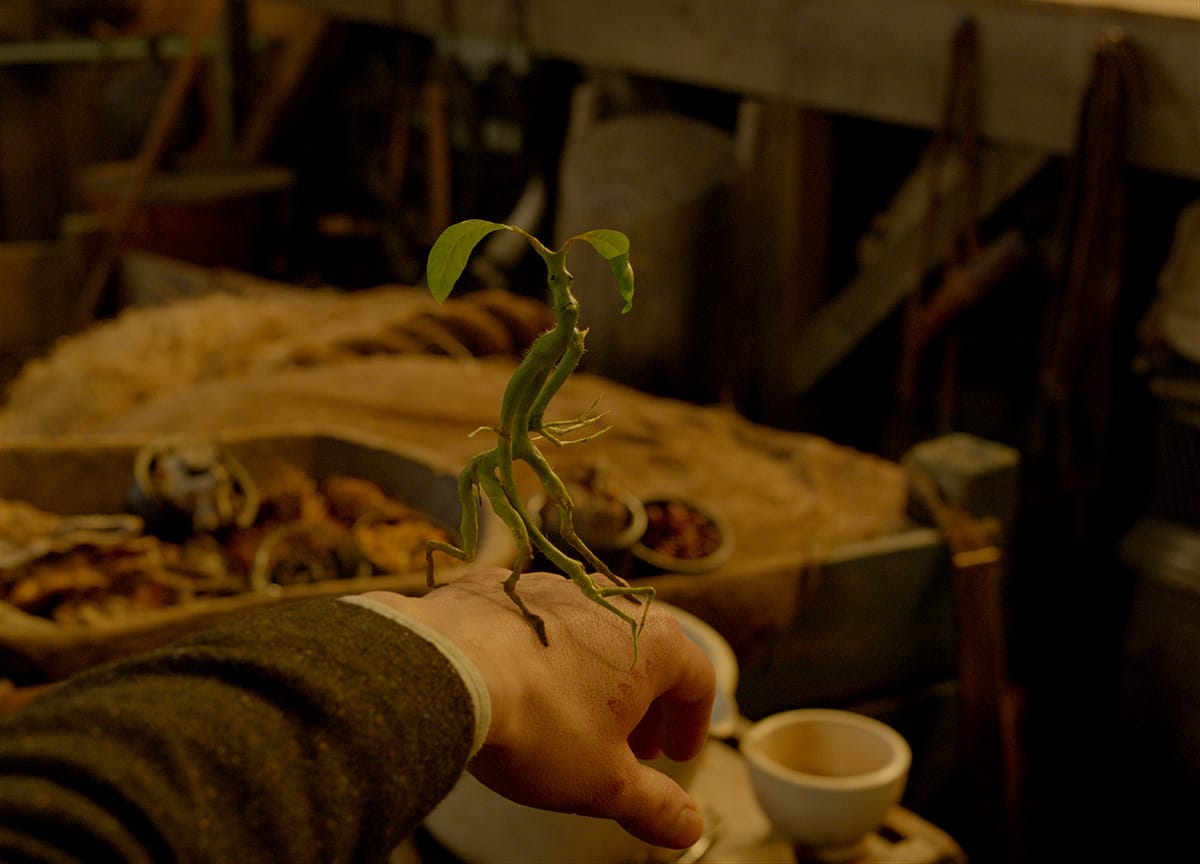
Pickett’s design was based on a sapling and the animators took advantage of the resulting organic and chaotic shapes, according to Grillo. “It presented a challenge of movement, something very unconventional. The face was very simple, very low-key. To me these are the most exciting challenges, where you don’t have to rely on a facial performance – it very much comes through the actions to reveal the intentions.”
“Shapes and forms gave you very unusual movement, with three legs for examples, and the right combination of shapes let you make him sad, proud or be expressive and for your heart to warm to him. It was a very understated character too, which is also one of the best kinds.”
Gnarlak the Goblin
American goblin gangster Gnarlak was a completely cg character made by Framestore, based on a performance by actor Ron Perlman. As such, the visual effects crew had to take care in representing Gnarlak with Perlman’s attributes. “We looked at lots of photos with period gangsters, some of the great pictures of people from the 1920s,” said Manz. “There was a particular posture and a look that really gave you a sense of that character, and so that became key in conceiving what he looked like, but also keeping a lot of Ron in there as well, facially.”
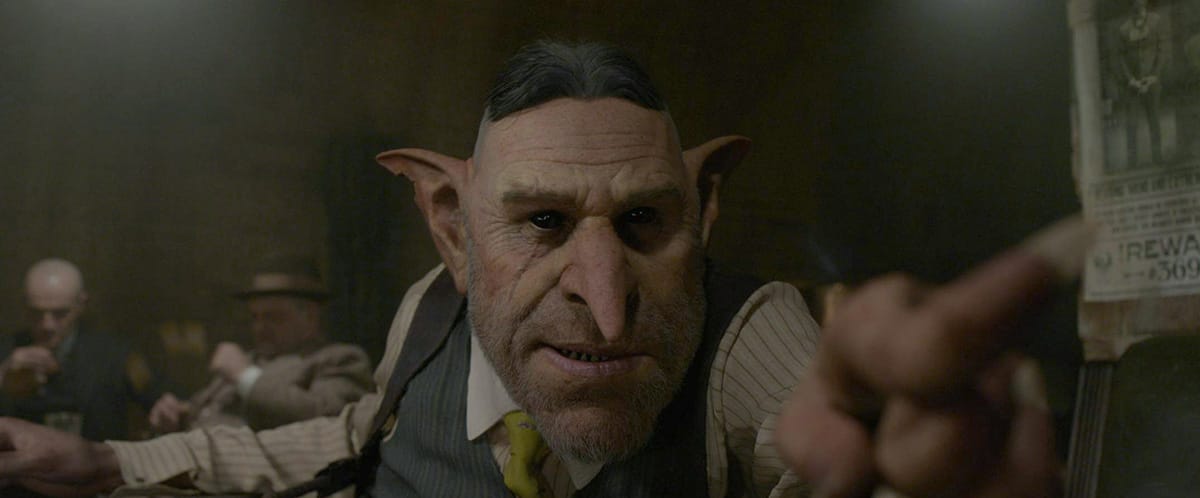
Framestore’s digital model relied on 90 individual Facial Action Coding System (FACS) poses of Perlman captured in a photogrammetry rig for multiple expressions that could then be re-targetted to Gnarlak. For the shoot, several methods were relied upon to get the principal performance. The actor was actually there on the set in a small chair opposite the other actors so they could play against the character. A height double actor in full costume and make-up and hair then performed scenes and helped provide useful lighting reference. Empty plates were also filmed to become the main clean plates.
Finally, Perlman donned a facial motion capture headset in a different wooden block scale set – where he would effectively be four-feet high – to carry out the scene again. “That’s where Ron’s performance came from and where we captured all his dialogue,” said Manz. “It meant that Framestore had all that material that they could retarget the capture onto their animation rig.”
Gnarlak’s appearance in the film would still very much be keyframe animated, but with all the aforementioned captured material as the base. “As we went along,” noted Manz, “David wanted Gnarlak to be quiet and almost disengaged. Our aim was to make him more and more a bastard.”
Credence’s Obscurial
Towards the end of the film, Credence Barebone (Ezra Miller) is revealed to be an Obscurial, a young wizard who has developed a parasitical magical force known as an Obscurus. This manifests itself into a black mess of particle energy to represent Credence’s torment. Double Negative crafted the effect.
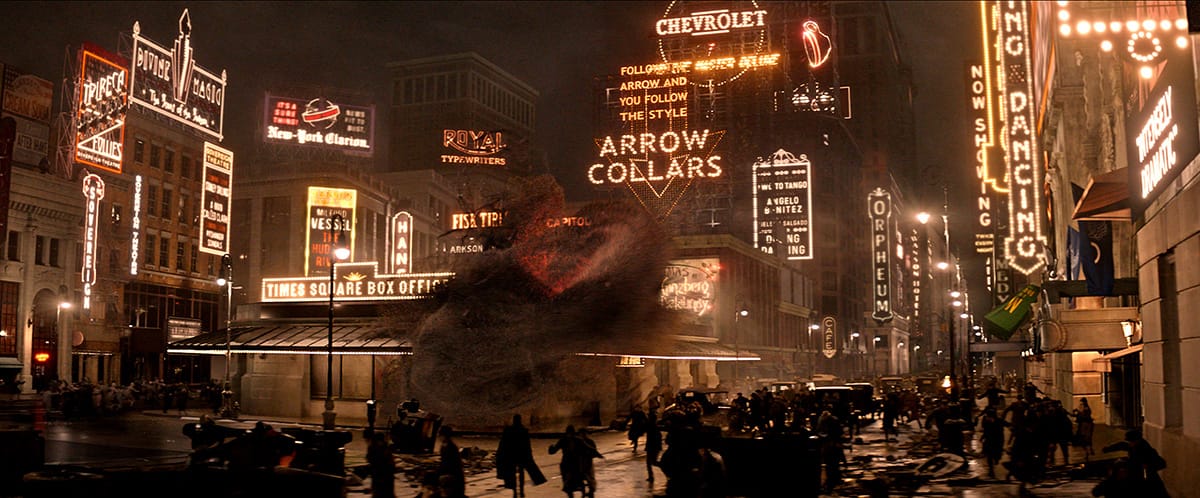
“That was a bit of a journey,” admitted Burke. “We didn’t really know what it was. It was unlike all the other creatures where we could draw things and then interpret them into models and start animating them. This thing had no form. It was rage, it was anger. So we went through the usual thing of trying to find reference of what it might move like but it was really Ezra’s character that was going to drive the Obscurus itself. He said, ‘Well actually guys I’ve been thinking about a performance I can show you.’ And he just went into this kind of possessed performance that we videoed and it was amazing what he did. Three minutes of sort of distortion and contortion.”
“We took this footage away, and we cut it and we reversed it, and using earlier video references that David liked we kind of emulated that using Ezra’s performance and then showed it to David again because he hadn’t been aware Ezra had even done this stuff. And David was blown away about it, he just thought, ‘Wow, this is our Obscurus.’”
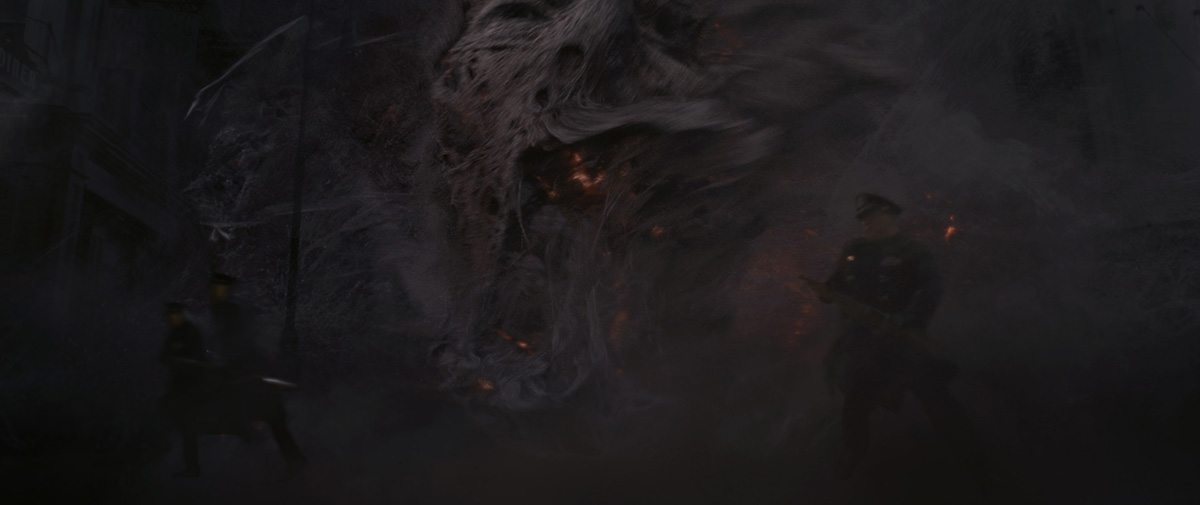
Double Negative then continued refining the concept, working in effects simulation software Houdini and its own proprietary tools to give the Obscurus faces character and movement. “The Obscurus was just a constantly changing, membranous sort of quality and then the particles came along afterwards,” said Burke.”
The, er, strudel
Of course, not all the visual effects in Fantastic Beasts were creatures. One memorable scene sees Scamander and Jacob visit the home of demoted Auror Tina Goldstein (Katherine Waterston) and her sister Queenie (Alison Sudol). They use their magic to make dinner. During the shoot, the dinner table was mostly empty, but then in post, Cinesite had all the dishes, cutlery, and glasses fly out of cupboards and drawers into place.
The studio also ‘baked’ a cg apple strudel that forms from raw ingredients that wrap up together in the air, float down, and settle in front of Jacob. “The strudel was a custom model per shot,” explained Cinesite’s Andy Morley. “It was a different piece of geometry with different displacement shaders. That was tricky but it meant we could tailor things for each shot.”
Inside the suitcase
Perhaps one of the more magical sequences in the film is the reveal of Scamander’s secret ‘zoo’ of fantastic beasts, hidden inside his suitcase. In a grand journey featured in what is essentially just one shot, the audience meets many of the creatures. Several vfx studios collaborated on the diorama-like sequence, sharing assets to bring it together.
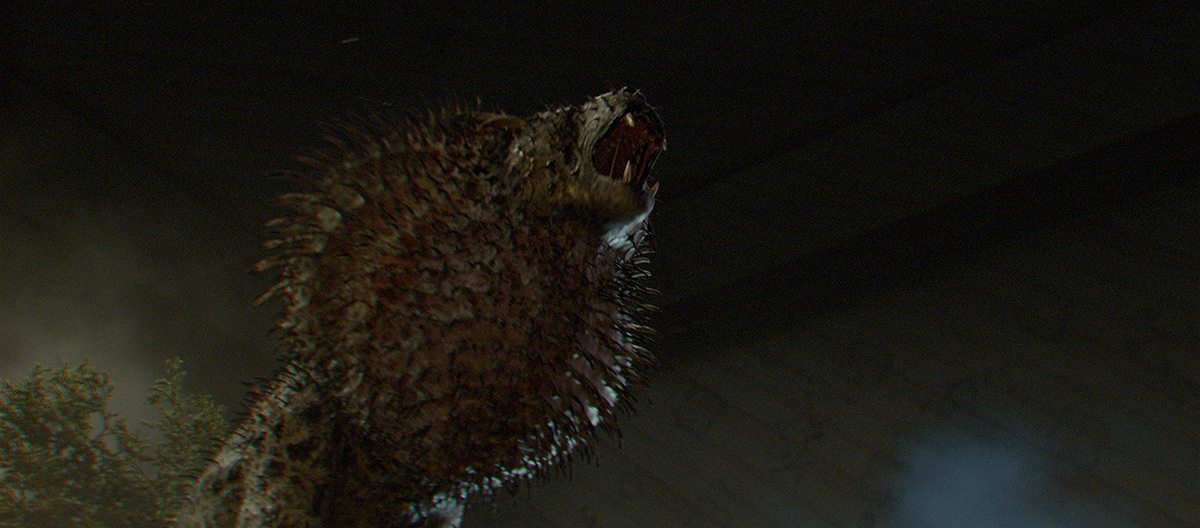
“That scene was in the script from the beginning,” said Burke. “It was always like the biggest design and conceptual problem of what would be in there? What would be the world that you hadn’t seen before? And it was a real collaboration with the great Stuart Craig, the production designer, and Dermot Power, who was working as a concept artist with Stuart on designing the sets. The previs team at Proof also previs’d and blocked out the scene.”
Getting into the suitcase in the first place turned out to be a combination of old-school filmmaking and some digital trickery handled by Cinesite. For shots of Jacob entering the suitcase, in particular, there was a hole in the set floor that he stepped into, with a temporary practical suitcase piece to hold onto. “We then had some fun shots where we replaced that piece, then add in a cg suitcase, which we had to make look much smaller so it looked like he was struggling to get in,” said Cinesite visual effects supervisor Andy Morley.
Inside the suitcase, the original idea was that each creature would exist in its own biosphere, but the filmmakers were told by J.K. Rowling that Scamander would have had to have been more powerful than Voldemort to create something like that. Instead, the environment was pared back to look more ‘homespun,’ complete with fake theatrical sets and painted backings.
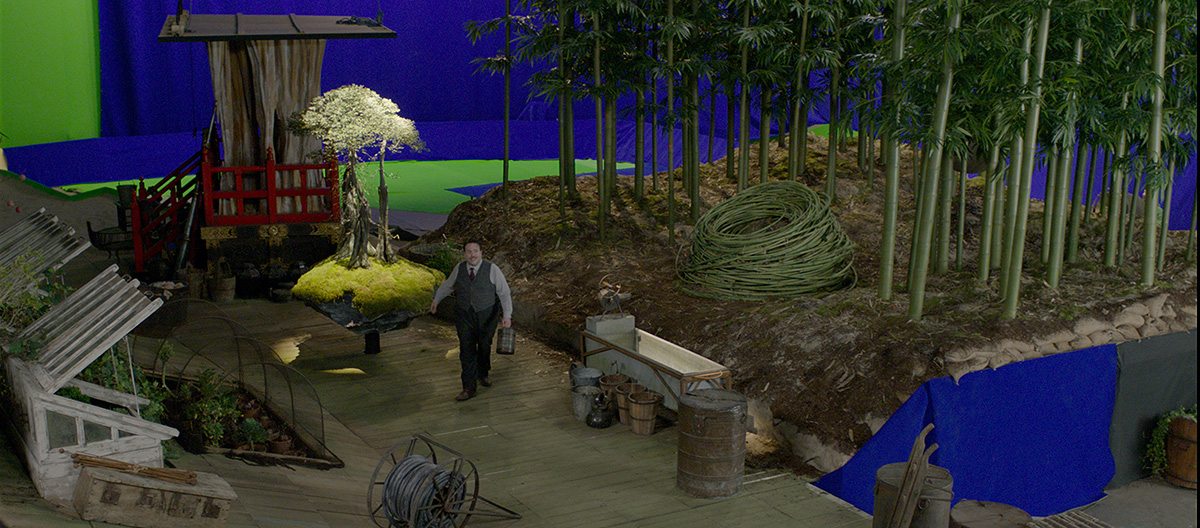
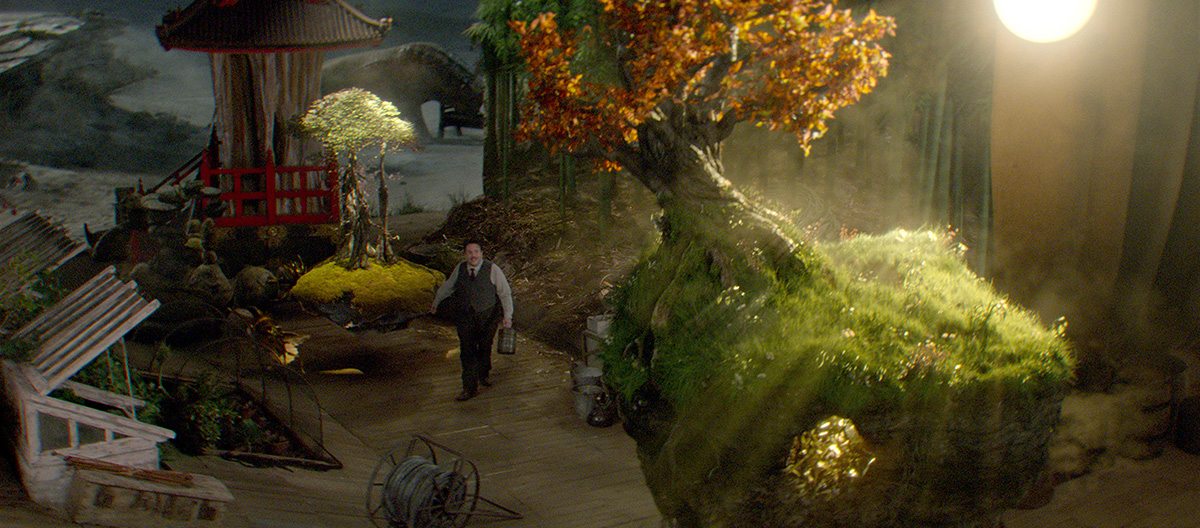
To film the live action, a soundstage was taped out to match what would be created digitally and to allow for a rehearsal. “David Yates would be filming with an iPad,” explained Burke. “The most important thing was how did they want to perform with the creatures and interact with the environment? Because that determined what would be built and what would be cg.”
Although the sequence seems to take place as one long shot, it was filmed in segments and pieced together with digital joins. Then several studios contributed post-vis and final shots – including The Third Floor, Proof, Framestore, Double Negative, Image Engine, MPC, Method Studios, and Rodeo FX. Rodeo, in particular, produced many of the environment composites.
“The collaboration was pretty crazy,” said Burke. “There’s one almost throw away moment where there’s some Billywigs that get eaten by a Doxy, and then get eaten by the pink Fwooper in the foreground. The Billywigs were MPC, being eaten by Rodeo dogs, eaten by Image Engine’s Fwooper in a Method environment. But everyone came together so well.”
All images and clips © 2016 Warner Bros. Pictures.

